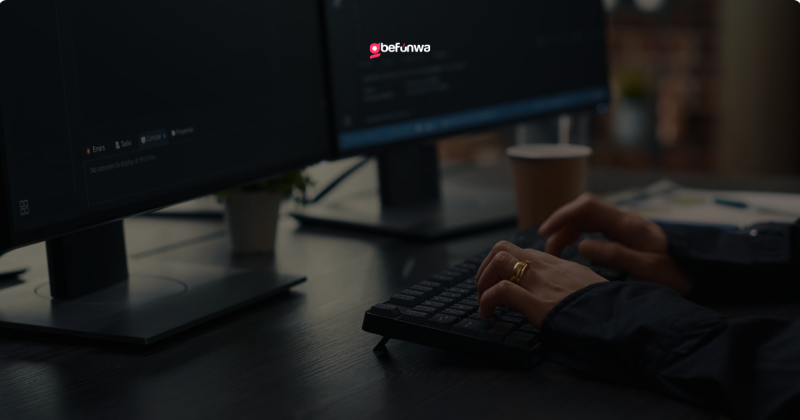
WordPress is a robust and flexible content management system, but like any software, it can sometimes run into issues. Knowing how effectively debugging and troubleshooting problems works is essential for maintaining a healthy WordPress site. This guide will provide a comprehensive overview of the tools and techniques you can use to identify and resolve issues in WordPress.
Debugging is the process of identifying, isolating, and fixing problems within software. In the context of WordPress, this can involve diagnosing errors, improving performance, and ensuring the overall stability of your site. Effective debugging helps in:
Before diving into debugging techniques, it’s helpful to be aware of some common WordPress issues:
The first step in debugging WordPress is to enable the debug mode. This provides detailed error messages and logging, which can help identify the root cause of issues.
You can enable debugging by adding specific constants to your `wp-config.php` file, located in the root directory of your WordPress installation. Here are the main constants used for debugging:
Once debugging is enabled, you can analyze the error logs to identify issues. The `debug.log` file in the `wp-content` directory will contain detailed information about errors and warnings. Reviewing these logs can provide insights into what is causing problems on your site.
Browser developer tools are invaluable for debugging front-end issues such as CSS, JavaScript errors, and rendering problems. Most modern browsers have built-in developer tools that you can access by right-clicking on a page and selecting “Inspect” or “Inspect Element.”
Plugin and theme conflicts are common sources of issues in WordPress. To identify if a conflict is causing a problem, you can deactivate all plugins and switch to a default theme (like Twenty Twenty-One).
1. Access the Dashboard: Go to your WordPress admin dashboard.
2. Navigate to Plugins: Click on the “Plugins” menu.
3. Bulk Deactivate: Select all plugins and choose “Deactivate” from the bulk actions dropdown.
1. Access the Dashboard: Go to your WordPress admin dashboard.
2. Navigate to Appearance: Click on the “Appearance” menu.
3. Activate a Default Theme: Activate one of the default WordPress themes.If the issue is resolved after deactivating plugins or switching themes, reactivate them one by one to identify the specific plugin or theme causing the problem.
JavaScript errors can cause functionality issues and poor user experiences. Use the console tab in browser developer tools to check for JavaScript errors. Fixing these errors often involves examining the scripts for syntax issues or conflicts with other scripts.
The `.htaccess` file controls many aspects of your WordPress site’s configuration, including permalinks and redirects. Corrupt or misconfigured `.htaccess` files can cause server errors and other issues. Steps to Inspect and Restore .htaccess
1. Access Your Server: Use FTP or a file manager in your hosting control panel.
2. Locate .htaccess: Find the `.htaccess` file in the root directory of your WordPress installation.
3. Check for Errors: Review the file for any incorrect rules or syntax.
4. Restore Defaults: If needed, replace the contents with default WordPress rules.
Query Monitor is a powerful debugging plugin for WordPress that provides detailed information about database queries, PHP errors, hooks, and more. It helps you analyze performance issues and track down the root cause of problems.
Database connection errors and issues with database queries can significantly impact your site. Use tools like phpMyAdmin or adminer to access and inspect your database.
Performance issues can be caused by various factors, including large images, poorly coded plugins or themes, and excessive HTTP requests. Use tools like Google PageSpeed Insights, GTmetrix, and Pingdom to analyze and improve your site’s performance.
Effective debugging and troubleshooting are crucial for maintaining a stable and high-performing WordPress site. By enabling debug mode, analyzing error logs, using developer tools, deactivating plugins and themes, inspecting the `.htaccess` file, and employing tools like Query Monitor, you can identify and resolve a wide range of issues. With these techniques, you can ensure your WordPress site runs smoothly, providing a better experience for your users.
Deborah Oludimu is an experienced content writer with 3+ years of experience. She is skilled in research, writing, and editing to produce high-quality, engaging content across industries. Deborah is passionate about creating content that informs and inspires
© 2026 GBEFUNWA.COM. All rights reserved.
The WordPress® trademarks are the intellectual property of the WordPress Foundation, and the Woo® and WooCommerce® trademarks are the intellectual property of WooCommerce, Inc. Uses of the WordPress®, Woo®, and WooCommerce® names in this website are for identification purposes only and do not imply an endorsement by WordPress Foundation or WooCommerce, Inc. gbefunwa is not endorsed or owned by, or affiliated with, the WordPress Foundation or WooCommerce, Inc.